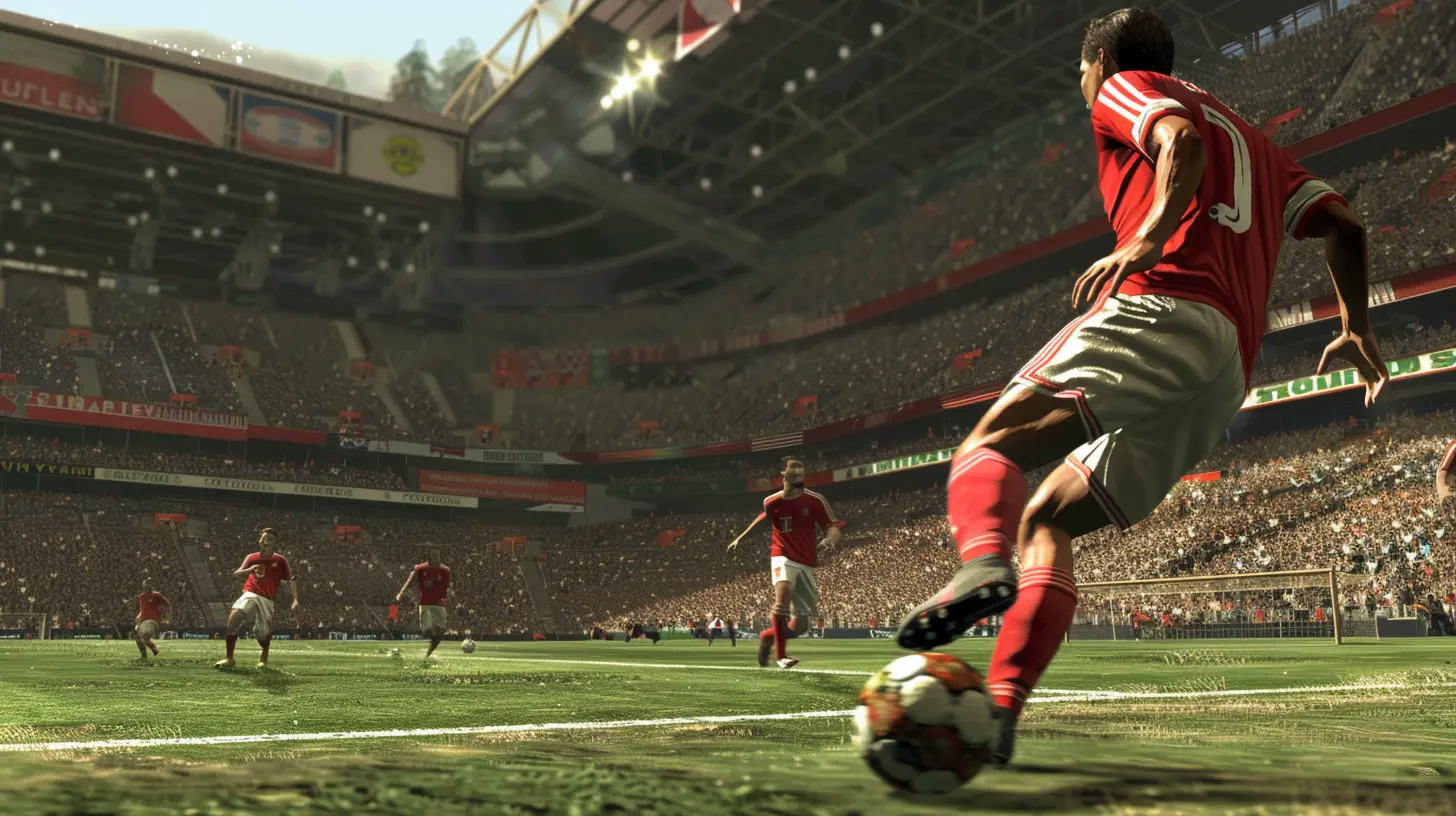The Evolution of the Soccer Manager Video Game Genre
28 September 2025
It’s crazy to think how far video games have come over the decades, isn’t it? From simplistic pixelated sprites to ultra-realistic graphics that almost feel lifelike. But one genre that has quietly carved out a devoted niche over the years is the soccer manager video game. It might not have the flashiness of FIFA or the adrenaline-pumping action of Call of Duty, but it’s built a loyal fanbase. Maybe you’re one of them, pouring hours into crafting the perfect tactics, scouting the next superstar, or just wondering why your star striker keeps missing sitters.
Today, let's take a deep dive into how soccer manager video games have evolved over the years. From their humble beginnings to their current status as one of the most addictive gaming genres out there, grab your favorite jersey—this is going to be a fun ride.

Where It All Began: The Early Days
Cast your mind back to the 1980s (or imagine it if you weren’t born yet). Soccer manager games were a far cry from the streamlined, feature-rich experiences we know today. The graphics? Non-existent. The gameplay? Extremely basic. The charm? Undeniable.It all started with games like Football Manager (not the modern one, but the 1982 version developed by Kevin Toms). This was the pioneer of soccer manager games. It wasn’t flashy—in fact, it was text-based—but it captured the imagination of football fans. It gave players the chance to step into the shoes of a manager, make decisions, and watch results unfold. Imagine playing on a system that would practically groan under the weight of today's calculator apps. Yet, back then, this was groundbreaking.
What made these early games so appealing? Well, they focused on the decision-making aspect of football—a side of the sport that fans didn’t really get to interact with before. It wasn’t just about watching the beautiful game; it was about actively shaping it. In a sense, it was like being handed the keys to your favorite club.
The 90s: A Growth Spurt
The 1990s were a turning point for the genre. Technology had improved, and developers could do so much more with their games. Gone were the days of purely text-based management. Now, graphical interfaces started creeping in, albeit in the most rudimentary form.Games like Championship Manager, released in 1992 by Sports Interactive, took things to the next level. The developers refined the gameplay loop, introducing in-depth stats, transfers, and tactical setups. It was like the genre went through puberty—it suddenly became more complex, but in a good way.
What’s particularly interesting about this period is how much these games started leaning into realism. The focus shifted to replicating the actual experience of managing a football club. Suddenly, you weren’t just playing a game; you were living out your dream of being the gaffer. For many fans, it was an escape—a way to release their inner tactician. (Let’s be honest, every football fan secretly thinks they can do a better job than the actual managers, right?)
The 2000s: The Rise of Football Manager
If the 90s were the genre’s teen years, the 2000s were when it truly came into its own. This was the period when Football Manager, developed by Sports Interactive (after parting ways with Eidos over Championship Manager), began its ascent to dominance.What set Football Manager apart? In one word: depth. The game’s database became legendary. We’re talking about thousands of players, clubs, and staff members, all meticulously researched. It wasn’t just a game anymore—it was practically a virtual scouting tool. In fact, real-life clubs started using Football Manager’s database to scout players. That’s how accurate it was.
The user interface also became more polished, making the experience smoother and more enjoyable. You could tweak tactics down to the tiniest detail, from deciding how your team should approach corners to instructing your goalkeeper to waste time when you were 1-0 up with five minutes to go. It was addictive in the best way possible. Don’t even get me started on how easy it was to lose entire weekends to it ("Just one more game," right?).
And then there was the rise of multiplayer. Who remembers sitting with friends, taking turns on the same computer, and trying to outperform each other? It was competitive, frustrating, and ridiculously fun.

The Modern Era: Data, AI, and Immersion
Fast forward to today, and the genre has reached dizzying heights. The graphics may still take a backseat—after all, this isn’t FIFA—but in terms of gameplay mechanics? It’s next level.With each iteration of Football Manager (you’ve noticed it’s still the king of the genre, haven’t you?), the developers have pushed the boundaries of realism. Artificial intelligence has become more sophisticated, making in-game opponents smarter and forcing players to adapt their strategies. Scouting networks now mimic real-life systems, and the expanded focus on youth development brings a whole new layer of challenges and rewards.
The introduction of 3D match engines in modern titles was another game-changer. While it’s not as smooth or flashy as standalone football games, seeing your tactical instructions play out on the virtual pitch adds an entirely new level of immersion. It's one thing to read "Your striker has scored," and another thing to watch him curl one into the top corner after a slick passing move you orchestrated.
Then, there’s the impact of real-world data. Modern soccer manager games are ridiculously detailed. Want to know how good a 17-year-old left-back from Argentina might be in five years? The game can tell you. Want to experiment with Gegenpressing or Tiki-Taka? Done. These games have become more than just entertainment—they're practically football simulations.

The Appeal: Why Do We Keep Coming Back?
So, why do people keep coming back to soccer manager games? It’s not like they’ve gone mainstream (you won’t see them headlining any major esports tournaments). But the fans who love them really love them.It all boils down to one thing: control. These games let you live out the fantasy of being a football manager in a way that no other medium can. You get to build your dream team, devise match-winning tactics, and bask in the glory of your virtual trophies. Sure, there are plenty of frustrations (don’t even talk to me about injury crises), but that’s all part of the experience.
They’re games for thinkers, for fans who love diving deep into the nitty-gritty of the sport. And let’s be honest—there’s something deeply satisfying about taking a lower league team all the way to Champions League glory. It’s like watching an underdog movie… except you’re in charge. Who wouldn’t want that?

What’s Next for Soccer Manager Games?
The future of the genre looks incredibly exciting. With advancements in AI and machine learning, games are only going to get smarter and more realistic. Imagine a game that adapts to your playstyle, forcing you to constantly innovate. Or one that integrates even deeper analytics, giving you access to coaching tools that real-life managers dream about.And with the rise of cloud gaming, we could see a shift towards accessibility. Imagine managing your team seamlessly across devices—starting on your PC, making some transfer inquiries on your phone, and finalizing tactics on your tablet. The possibilities are endless.
One thing’s for sure, though: the genre isn’t going anywhere. If anything, it’s only going to keep growing, attracting new fans and cementing its place in the gaming world.
Final Whistle
The evolution of the soccer manager video game genre has been a fascinating journey. From humble text-based beginnings to the complex simulations we see today, it’s a testament to the passion of football fans and the creativity of game developers. Whether you’re a long-time fan or someone new to the genre, one thing’s certain: there’s no better time to dive in and start your managerial career.So, ready to take your team to glory? The virtual dugout is waiting.
all images in this post were generated using AI tools
Category:
Sports GamesAuthor:

Madeleine McCaffrey
Discussion
rate this article
1 comments
Martha Marks
Hidden codes reveal secrets of victory.
October 3, 2025 at 2:57 AM

Madeleine McCaffrey
Thank you! Hidden codes add an exciting layer, showcasing how strategy and innovation in gameplay have evolved alongside the genre.


